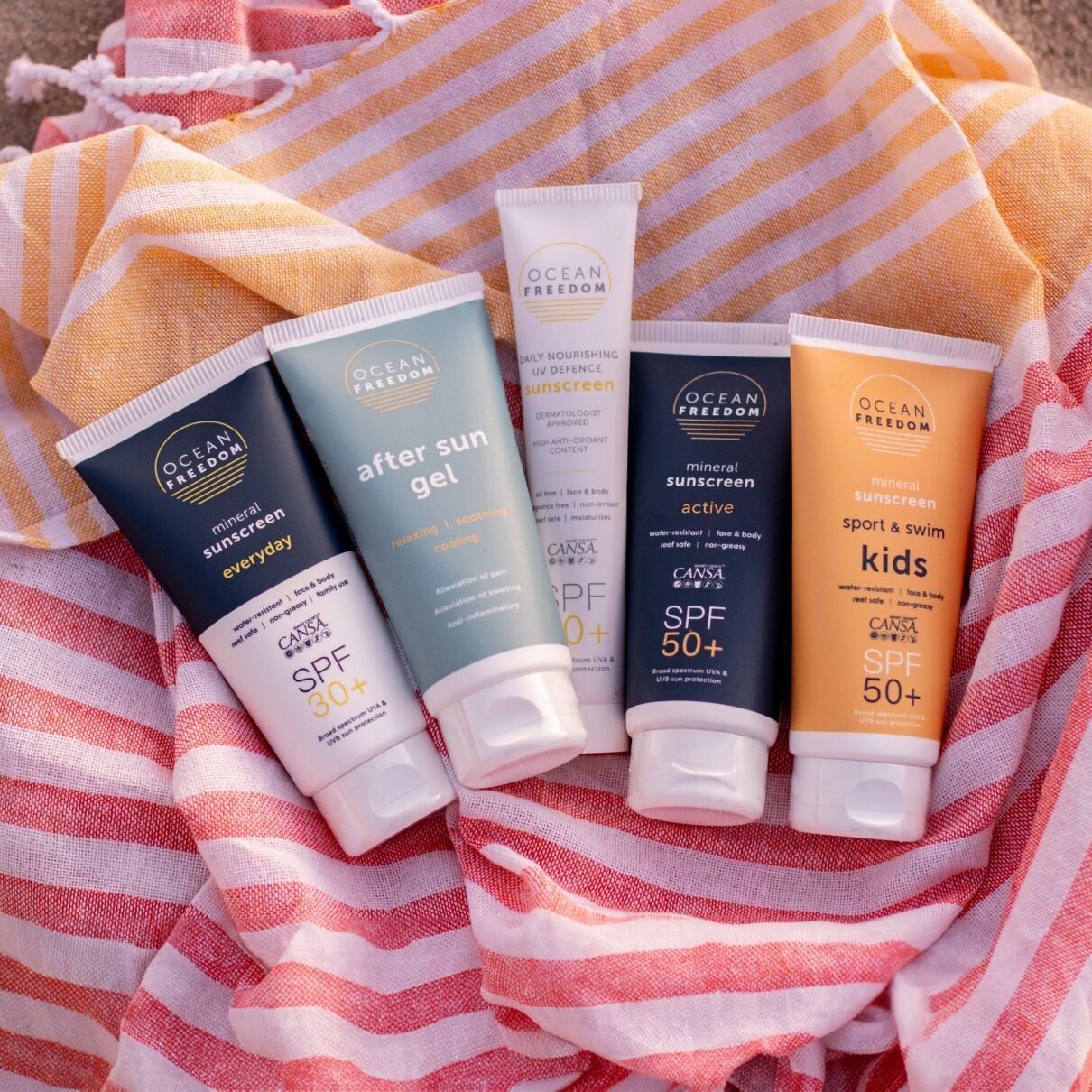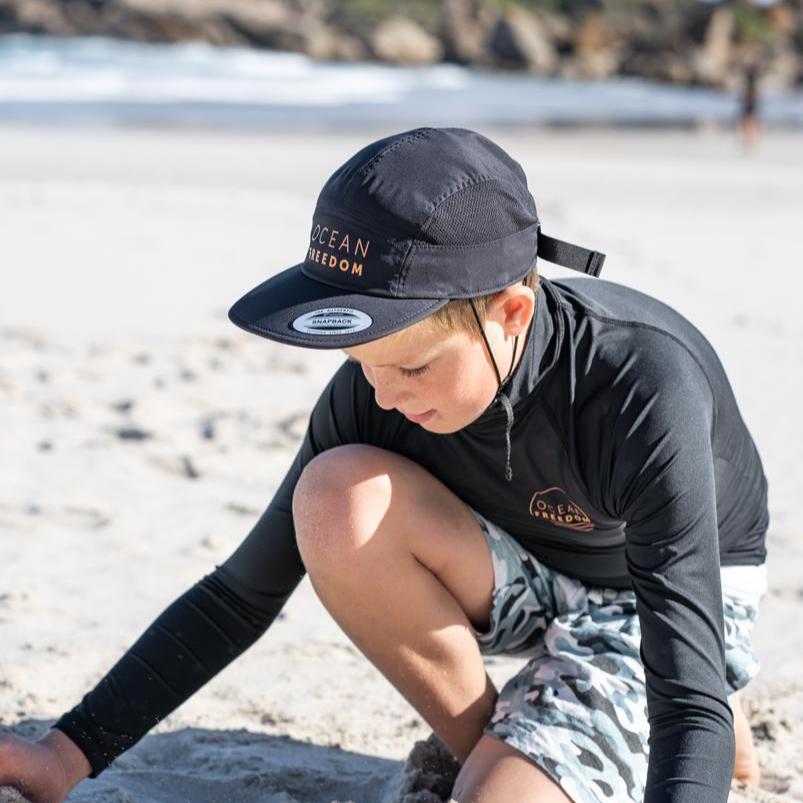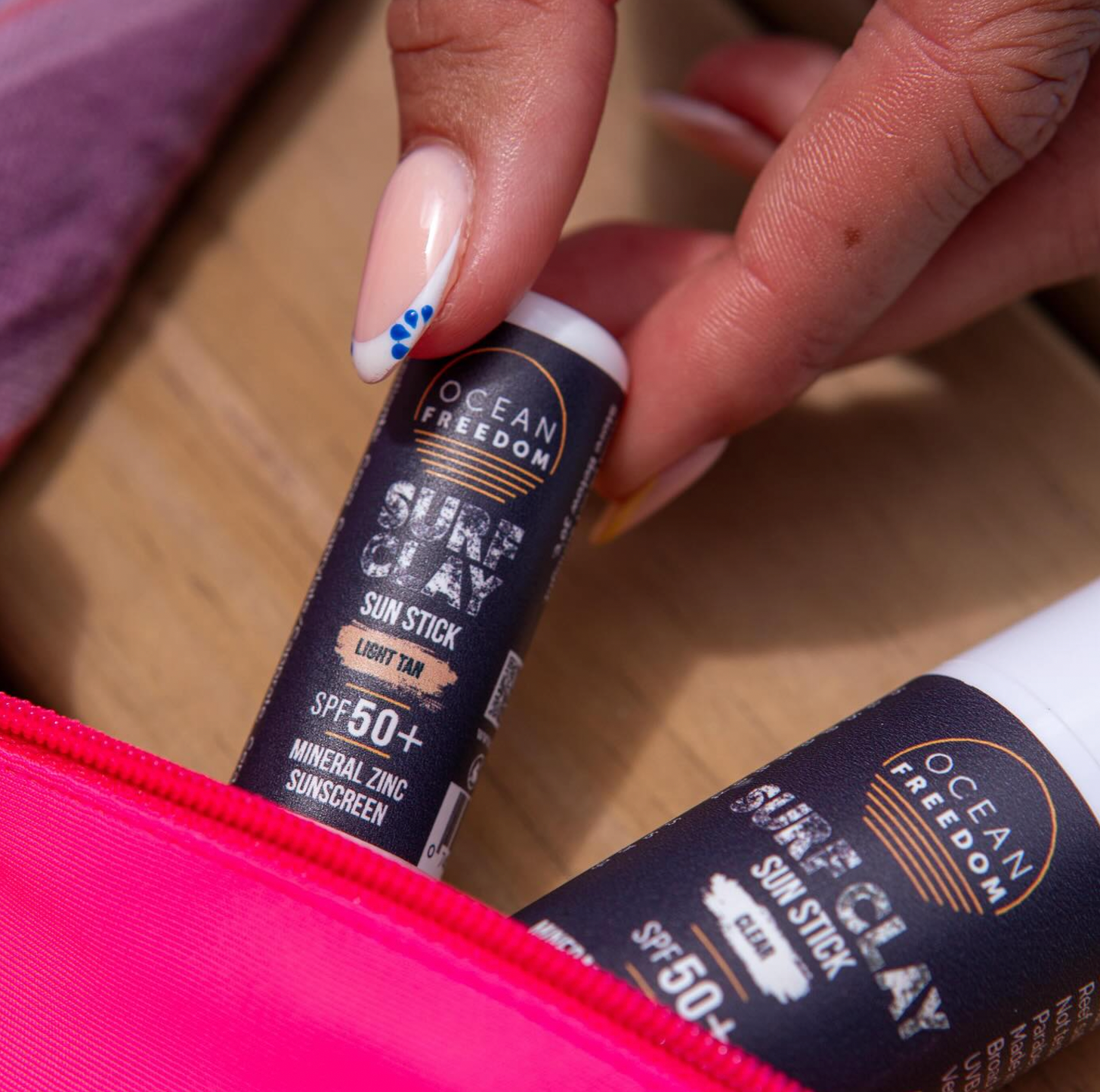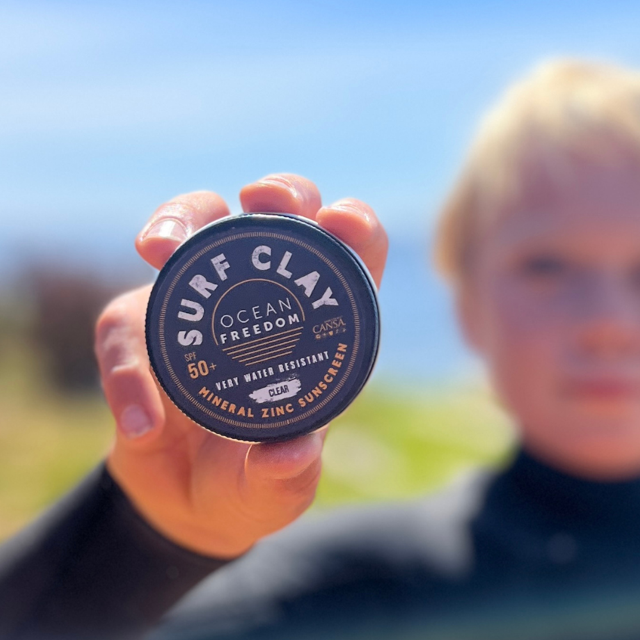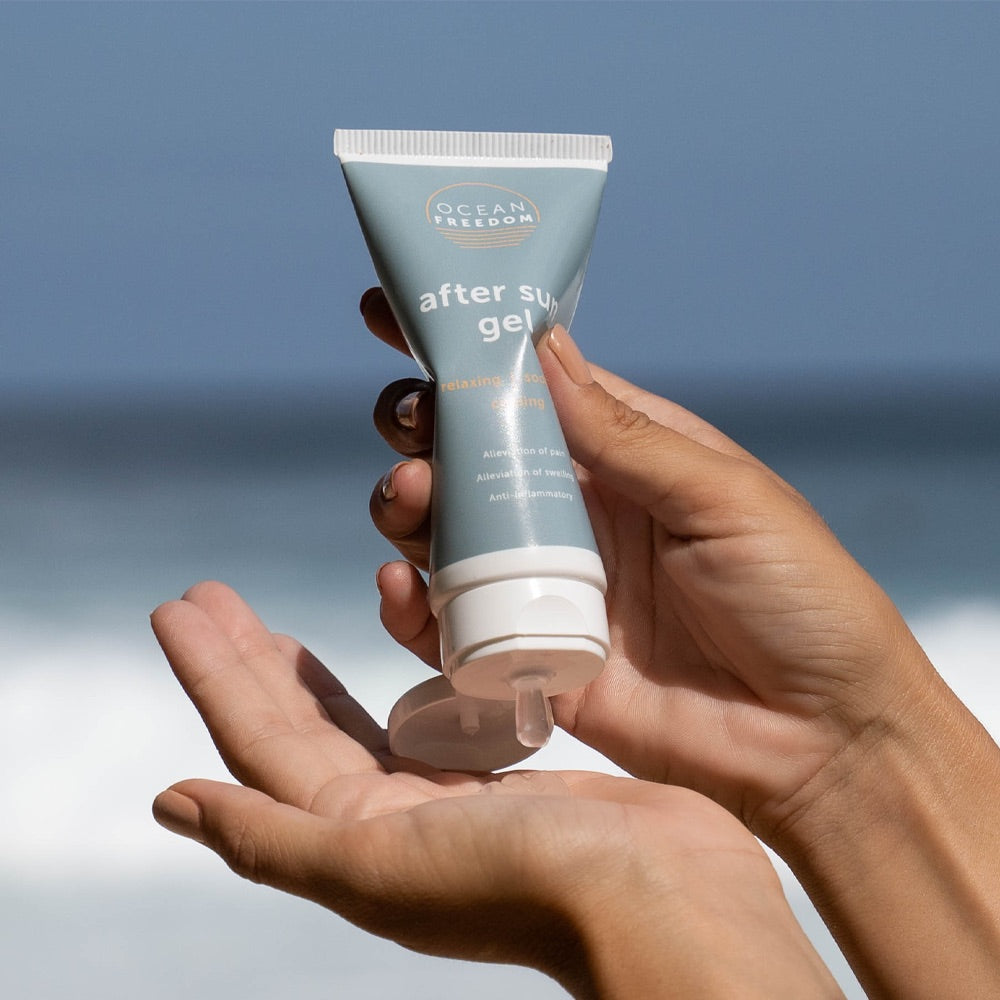South Africa is blessed with long summer days, endless beaches, and sunshine that
invites us outdoors. But it also comes with a warning. Our country experiences some of
the harshest UV conditions in the world, with the UV Index often reaching 11+ (Extreme)
in summer. At those levels, unprotected skin can burn in less than ten minutes.
That’s why Ocean Freedom and Wetsuit Warehouse have joined forces this season to
share ten practical, everyday habits that will help you and your family enjoy summer
safely while protecting your skin and the ocean.
1. Start with sunscreen The first and most important rule is simple: always wear
sunscreen. Studies show that up to 90% of non-melanoma skin cancers are linked to
UV exposure, making sunscreen your first line of defense. Ocean Freedom’s mineral
sunscreen is reef-safe, dermatologist approved and free from parabens, sulphates and
fragrance. Remember to reapply every two hours and after swimming or sweating, no
matter how strong your base layer is.
2. Add protective clothing Once your skin is covered in sunscreen, the next layer of
protection comes from your clothing. Fabrics with a UPF 50 rating block 98% of UVA
and UVB rays, making rash vests, wetsuits, and lightweight long sleeves an easy win
for sun safety. Wetsuit Warehouse stocks a wide range of rashies, wetsuits, and surf-
ready gear designed to give you that extra shield.
3. Don’t forget a hat Pair them with a wide-brim hat, which helps protect your face, ears, and the back of your neck areas sunscreen often wears off first. Studies show that broad-brimmed hats can reduce UV exposure on the face by up to 50%, though sunscreen is still essential to catch the rays that bounce and scatter.
4. Seek shade wisely Of course, even with sunscreen, clothing, and hats, you’ll want to
seek shade during the hottest hours. The sun is strongest between 10 am and 3 pm,
and while sitting under a tree or umbrella makes a big difference, it isn’t perfect.
Research has shown that more than 17% of UV radiation can still reach you in the
shade, thanks to reflection from sand and water.
5. Protect your eyes Protecting your eyes is just as important as protecting your skin.
UV radiation is a major contributor to cataracts with at least 20% worldwide linked to
sun exposure and up to 10% of skin cancers occur on the eyelids, one of the most
overlooked areas of the body. A good pair of UV-blocking sunglasses, paired with
Ocean Freedom sunscreen applied carefully around the eyes, will keep both vision and
skin safer in the long term.
6. Stay hydrated Hydration is another often-overlooked part of sun safety. Losing just
2% of body weight through dehydration can impair physical performance and put extra
stress on your skin. Carrying a reusable water bottle or hydration flask is the easiest
way to keep topped up during a long beach day or surf session. Hydrated skin, paired
with sunscreen, stands up much better to the challenges of heat and sun exposure.
7. Time your sun Timing also matters. In South Africa, peak UV is no joke, and
summer days regularly bring “Extreme” UV levels. If you can, plan your outdoor
activities for mornings or late afternoons when the sun is gentler. And to make it even
easier, we recommend downloading the SunSmart app, which gives live UV
notifications for your area and daily alerts to remind you how strong the sun really is.
8. Reapply, reapply, reapply One of the biggest mistakes people make is forgetting to
reapply sunscreen. Studies show most people apply only 25–50% of the recommended
amount, which means their protection is already weaker than they think. To stay
properly protected, follow these rules: Reapply every 2 hours during sun exposure. If
your sunscreen is water-resistant, it protects you for about 40 minutes in the water. If it’s
very water-resistant, it lasts up to 80 minutes before you need to reapply. Always
reapply after swimming or sweating, no matter what the label says. A simple trick? Set
an alarm on your phone. Ocean Freedom’s stick format makes it quick to reapply, even
with sandy hands.
9. Check the UV Index Before heading out, it’s also worth taking 10 seconds to check
the UV Index. This simple number tells you everything you need to know. At 0–2, the
risk is low. From 3–5, it’s moderate and you’ll need sunscreen, hats, and sunglasses.
6–7 is high, and you’ll need SPF50+, clothing, and shade. At 8–10 very high, skin can
burn in under 20 minutes, and at 11+ extreme, it can happen in under 10. On those
days, it’s best to avoid the midday sun entirely.
10. Cool down your skin Finally, sun safety doesn’t end when you leave the beach. UV
damage continues for hours after exposure, which is why aftercare matters. Ocean
Freedom’s After Sun Gel is enriched with Aloe Vera, Chamomile, and African botanicals
to cool, calm, and restore the skin. Applying it after rinsing off salt and sweat helps
reduce redness, restore hydration, and support your skin’s natural repair process. Think
of it as the last step in a cycle of protection: protect, play, restore.
Sun safety isn’t about one habit it’s about layering them all together. Sunscreen first,
then clothing, hats, shade, sunglasses, hydration, timing, reapplication, UV checks, and
aftercare. With Ocean Freedom mineral sunscreen and Wetsuit Warehouse’s sun-smart
gear, you have everything you need for a safe, active, and ocean-ready summer.
Protect your skin. Protect your adventure. Protect what you love.
Check out Wetsuit Warehouse online or in store here https://www.wetsuitwarehouse.co.za/

